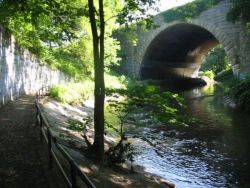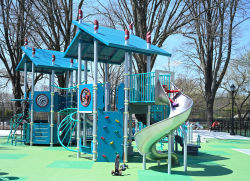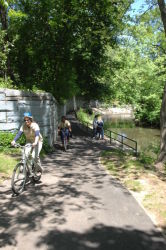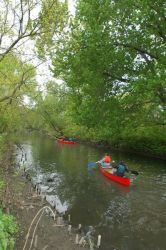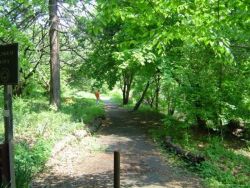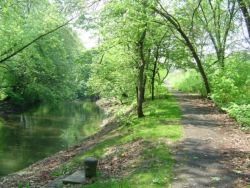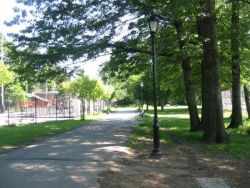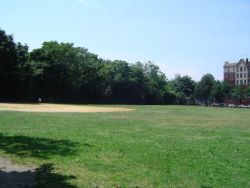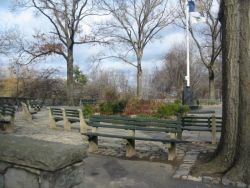Bronx Park
Bronx Park
Bronx Park, like the surrounding borough and the river that runs through it, is named for the 17th century Swedish sea captain who settled the area, Jonas Bronck (1600-1643). Bronck (sometimes also spelled Bronk) was born in Sweden. He learned navigation and became a sea captain in Amsterdam, and in 1639 settled in the area now named for him. The Swedish captain purchased approximately 500 acres of land from the Dutch West India Company, and traded tools, clothes, and utensils with local Native Americans for additional property. He built a stone home in what is now Morrisania, and owned one of the largest collections of books in the colony. Bronck’s estate also played host to a peace conference with the Weckquaesgeek Indians in 1642.
After Bronck, this property passed through several different families before the city acquired 640 acres of it between December 1888 and January 1889. Inspiration for Bronx Park came during a widespread movement to create public parks throughout the city in the 1880s. In 1881, John Mullaly (1835-1915), a former newspaper reporter and editor, and a group of citizens concerned with widespread urban growth, formed the New York Park Association. The group’s lobbying efforts helped the passage of the New Parks Act in 1884, which funded the acquisition of several major undeveloped lands for the purpose of creating parks and parkways. By 1890, the city had acquired properties in the Bronx that would eventually become known as Van Cortlandt, Pelham Bay, Bronx, Crotona, and Claremont Park, as well as four parkways. John Mullaly Park, an 18-acre parkland in the Highbridge section of the Bronx, was dedicated to the park activist in 1932.
In 1891, 250 acres of this site were allotted to the New York Botanical Society. The New York Botanical Garden was modeled after the Royal Botanical Gardens in Kew, England, and has become one of the most distinguished gardens in the world. The garden houses living collections of temperate and tropical plants from all over the world as well as a huge collection of preserved plant specimens. It is also home to a 40-acre “virgin” forest, one of the last such preserves in the city.
The City of New York allotted another 250 acres to the New York Zoological Society in 1898 to build a park to preserve native animals and promote zoology. The Bronx Zoo opened in 1899 and is the largest urban zoo in the United States housing over 8,000 animals representing more than 800 species. In 1906, the city acquired another 66 acres on the southeastern end of this property. This area currently houses Ranaqua, NYC Parks’ Bronx headquarters.
Bronx Park is home to many monuments presented to the city, such as the Rainey Memorial Gate, an ornamental gate with 22 full-sized sculpted animals located at the Fordham Road entrance to the zoo. Created by sculptor Paul Manship (1885-1966) and dedicated in 1934, the monument honors Paul J. Rainey (1877-1923), a big game hunter and patron of the zoo. The gate, with its “tree of life” motif, is one of the few examples in New York City of the French Arts Décoratifs style.
Another historic landmark is a souvenir from the Ice Age known as the Rocking Stone. Located in the Bronx Zoo overlooking the Buffalo Range, the stone is a rough cube of pinkish granite, resting on a granite slab base. This relic, roughly seven feet high and weighing around 30 tons, is balanced perfectly and cannot be moved. An old snuff mill and other architectural remnants of the area’s last private owner, the Lorillard family, also stand on the grounds of the New York Botanic Gardens.
Bronx Park has many recreation areas including playgrounds, bicycle paths, baseball diamonds, tennis and basketball courts, and football and soccer fields. From the zoo to playgrounds to historical landmarks, Bronx Park is an area for all to enjoy.
Check out your park's Vital Signs
Clean & Safe
Green & Resilient
Empowered & Engaged Users
Share your feedback or learn more about how this park is part of a
Vital Park System

